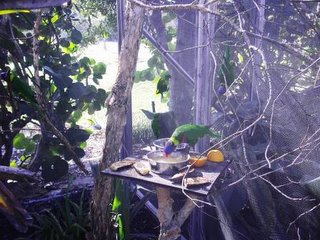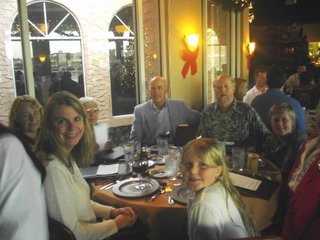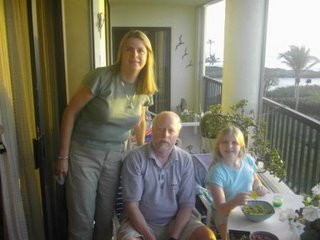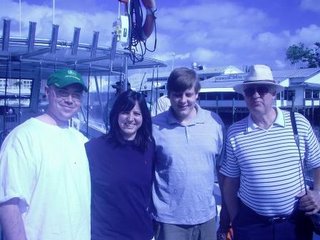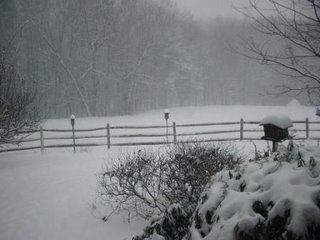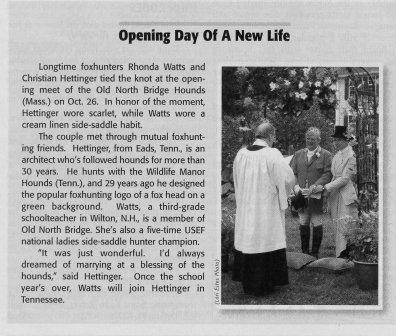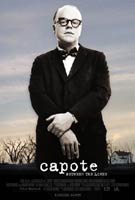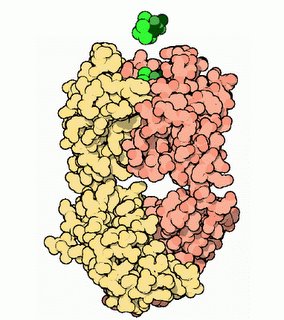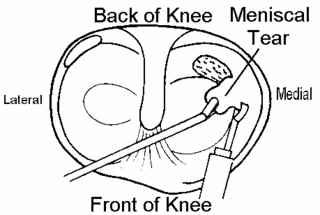A new book is about to come out that proposes a new classification for life. The new classification includes things like RNA life which has never been seen, synthetic life that has yet to be made and extraterrestrial life that has yet to be encountered. It is called life as we do not know it but Peter Ward.
I have been interested in RNA life for some time. It is the only way to avoid the chicken or egg problem. What is needed is a single molecule that can carry the genetic code and also catalyze chemical reactions. However, there are some problems as listed below. The panspermia people say that life came from outer space and seeded a young earth. That may be so but then how did that life originate?
From
www.panspermia.org/rnaworld.htmThe RNA World
What'sNEWVirtually all biologists now agree that bacterial cells cannot form from nonliving chemicals in one step. If life arises from nonliving chemicals, there must be intermediate forms, "precellular life." Of the various theories of precellular life, the most popular contender today is "the RNA world."
RNA has the ability to act as both genes and enzymes. This property could offer a way around the "chicken-and-egg" problem. (Genes require enzymes; enzymes require genes.) Furthermore, RNA can be transcribed into DNA, in reverse of the normal process of transcription. These facts are reasons to consider that the RNA world could be the original pathway to cells. James Watson enthusiastically praises Sir Francis Crick for having suggested this possibility
(1):
The time had come to ask how the DNA—>RNA—>protein flow of information had ever got started. Here, Francis was again far ahead of his time. In 1968 he argued that RNA must have been the first genetic molecule, further suggesting that RNA, besides acting as a template, might also act as an enzyme and, in so doing, catalyze its own self-replication.
It was prescient of Crick to guess that RNA could act as an enzyme, because that was not known for sure until it was proven in the 1980s by Nobel Prize-winning researcher Thomas R. Cech
(2) and others. The discovery of RNA enzymes launched a round of new theorizing that is still under way. The term "RNA world" was first used in a 1986 article by Harvard molecular biologist Walter Gilbert
(3):
The first stage of evolution proceeds, then, by RNA molecules performing the catalytic activities necessary to assemble themselves from a nucleotide soup. The RNA molecules evolve in self-replicating patterns, using recombination and mutation to explore new niches. ... they then develop an entire range of enzymic activities. At the next stage, RNA molecules began to synthesize proteins, first by developing RNA adaptor molecules that can bind activated amino acids and then by arranging them according to an RNA template using other RNA molecules such as the RNA core of the ribosome. This process would make the first proteins, which would simply be better enzymes than their RNA counterparts. ... These protein enzymes are ... built up of mini-elements of structure.
Finally, DNA appeared on the scene, the ultimate holder of information copied from the genetic RNA molecules by reverse transcription. ... RNA is then relegated to the intermediate role it has today—no longer the center of the stage, displaced by DNA and the more effective protein enzymes.
CechToday, research in the RNA world is a medium-sized industry. Scientists in this field are able to demonstrate that random sequences of RNA sometimes exhibit useful properties. For example, in 1995, a group of researchers reported "Structurally Complex and Highly Active RNA Ligases Derived from Random RNA Sequences"
(4). (Ligases are enzymes that splice together other molecules such as DNA or RNA.) The results are interesting—they suggest that randomness can produce functionality. The authors interpret the results to mean that "the number of distinct complex functional RNA structures is very large indeed." There is a lot to learn about RNA, and research like this is how we learn it. But these and other similar findings arrived at in highly orchestrated experiments that start with biologically produced RNA are very far from proving that the RNA world is the pathway between nonlife and life. In nature, far from the sterilized laboratory, uncontaminated RNA strands of any size would be unlikely to form in the first place. "... The direct synthesis of ... nucleotides from prebiotic precursors in reasonable yield and unaccompanied by larger amounts of unrelated molecules could not be achieved by presently known chemical reactions"
(5).
CrickFrancis Crick himself has become much less enthusiastic about the RNA world than Watson. In 1973, he and another eminent researcher into the origin of life, Leslie E. Orgel, published a paper advocating the theory of "Directed Panspermia"
(6). In 1981, Crick published Life Itself, a whole book about that theory
(7). And by 1993 he says, "It may turn out that we will eventually be able to see how this RNA world got started. At present, the gap from the primal 'soup' to the first RNA system capable of natural selection looks forbiddingly wide"
(8).
At the Salk Institute for Biological Studies, in 1994, Leslie Orgel observes, "Because synthesizing nucleotides and achieving replication of RNA under plausible prebiotic conditions have proved so challenging, chemists are increasingly considering the possibility that RNA was not the first self replicating molecule..."
(9).
Apparently NASA has lost enthusiasm for the RNA world as well. In the Final Report issued after the "Astrobiology Workshop" held September 9-11, 1996 at Ames Research Center, California, we read
(10),
It has been postulated that there was a time in protobiological evolution when RNA played a dual role as both genetic material and a catalytic molecule ("the RNA world"). However, this appealing concept encounters significant difficulties. RNA is chemically fragile and difficult to synthesize abiotically. The known range of its catalytic activities is rather narrow, and the origin of an RNA synthetic apparatus is unclear.
Other Theories
In spite of the intense level of work on the RNA world in the last decade, there is no consensus theory for precellular life. There are many theories. Here are some of the others —
A few scientists still say that DNA could succeed in starting life on its way
(11). But even the shortest DNA strand needs proteins to help it replicate. This is the chicken-and-egg problem.
There is a "proteins first" school. For example, Manfred Eigen of Germany's Max Planck Institute says, "There is no doubt that proteins, which are more easily formed, were first on the scene"
(11.5). Of course, these first proteins must be much shorter than any used in life today, because of the sheer unlikelihood of forming useful long ones out of a soup of amino acids.
Physicist Freeman Dyson proposes to solve the chicken-and-egg problem with a double origin, one for metabolism (proteins) and one for replication (strands of nucleotides)
(12).
In Seven Clues to the Origin of Life
(13), A. G. Cairns-Smith says that clay crystals could have served as the scaffolding upon which the first short DNA or RNA genome was constructed. A new elaboration of this idea prompted one writer to wonder, "Primordial soup or crêpes?"
(14). Even more recently, another tangent on this path leads to zeolite
(14.5).
Biologists Harold J. Morowitz
(15), David Deamer
(16), and others
(17), advocate a theory that could be paraphrased as "containers first."
Jeffrey L. Bada of the Scripps Institution of Oceanography holds the minority view that the early Earth was frozen and believes precellular life started in "cold soup" under the ice
(18, 19).
Chemists Claudia Huber and Günter Wächtershäuser say the soup where life originated was actually quite hot, probably, near undersea volcanic vents, where iron and nickel sulfides might catalyze some of the necessary reactions
(19.5-19.7).
Cornell Astronomer Thomas Gold wonders if life might have originated in a hot environment even deeper, in Earth's crust
(19.8).
Stuart Kauffman of the Santa Fe Institute, says, "...whenever a collection of molecules contains enough different kinds of molecules, a metabolism will crystallize from the broth"
(20).
Another idea is the "PNA world." Because starting the RNA world is so difficult, there probably needs to be a pre-RNA world. PNA, or peptide nucleic acid, might have some of the properties necessary to constitute that world
(21). This would be pre-precellular life.
The Time Problem
To go from a bacterium to people is less of a step than to go from a mixture of amino acids to a bacterium. — Lynn Margulis
(21.5)The only premise that all of the precellular theories share is that it would be an extremely long time before the first bacterial cells evolved. If precellular life somehow got going, it could then conceivably begin to crank out, by some precellular process, random strings of nucleotides and amino acids, trying to luck into a gene or a protein with advantages which would lead to bacterial life. There is no evidence in life today of anything that produces huge quantities of new, random strings of nucleotides or amino acids, some of which are advantageous. But if precellular life did that, it would need lots of time to create any useful genes or proteins. How long would it need? After making some helpful assumptions we can get the ratio of actual, useful proteins to all possible random proteins up to something like one in 10^500 (ten to the 500th power). So it would take, barring incredible luck, something like 10^500 trials to probably find one. Imagine that every cubic quarter-inch of ocean in the world contains ten billion precellular ribosomes. Imagine that each ribosome produces proteins at ten trials per minute (about the speed that a working ribosome in a bacterial cell manufactures proteins). Even then, it would take about 10^450 years to probably make one useful protein. But Earth was formed only about 4.6 x 10^9 years ago. The amount of time available for this hypothetical protein creation process was maybe a hundred million or 10^8 years. And now, to make a cell, we need not just one protein, but a minimum of several hundred.
So even if we allow precellular life, there is a problem getting from there to proteins, genes and cells. The random production of proteins does not succeed as an explanation. Other intermediate, unspecified stages must be imagined. We could call these stages post-precellular life. By whatever means, life's evolution through these stages would have to be time-consuming.
One advocate of the RNA world, Gerald Joyce, allows 400 million years for "The Rise and Fall of the RNA World"
(22):
...At some point RNA organisms began to dabble in the use of short peptides, leading eventually to the development of protein synthesis. Other "experiments" led to the discovery of DNA, which provided a more stable repository for genetic information. By 3.6 to 3.8 billion years ago all of these events had come to pass; the RNA world had fallen and the DNA/protein world had risen in its place.
But other researchers see evidence for prokaryotic cells in the first 100 million years, maybe even immediately. "...Actual cells have been found in the earth's oldest unmetamorphosed sediments...," says Gould in Wonderful Life
(23). Bada says that cyanobacteria may have emerged only ten million or 10^7 years after the first precellular life
(24). In November, 1996, S. J. Mojzsis of the Scripps institution of Oceanography and others reported isotopic evidence that cellular metabolism was under way before 3.8 billion years ago
(25). Even before the research by Mojzsis et al., Francis Crick was worried by the time problem. "...The real fossil record suggests that our present form of protein based life was already in existence 3.6 billion years ago.... This leaves an astonishingly short time to get life started"
(26). Another researcher, Peter B. Moore, says this about the time problem
(27):
Of one thing we can be certain: The RNA world—if it ever existed—was short-lived. The earth came into existence about 4.5 x 10^9 years ago, and fossil evidence suggests that cellular organisms resembling modern bacteria existed by 3.6 x 10^9 years before the present.... There are even hints that those early organisms engaged in photosynthesis, which is likely to have been a protein-dependent process then, as now. Thus it appears likely that organisms with sophisticated, protein based metabolisms existed only 0.9 x 10^9 years after the planet's birth.
The "window of opportunity" for the RNA world was much shorter than 0.9 x 10^9 years. The earth's surface was uninhabitable at the beginning due to heat generated by meteoric bombardment and its geological differentiation. ...Thus, the interval in which the biosphere could have been dominated by RNA-based life forms may be less than 100 million years. Incidentally, when one starts thinking along these lines, one must consider the unthinkable, i.e., that the length of time that RNA-based proteins actually bestrode the earth might be zero.

